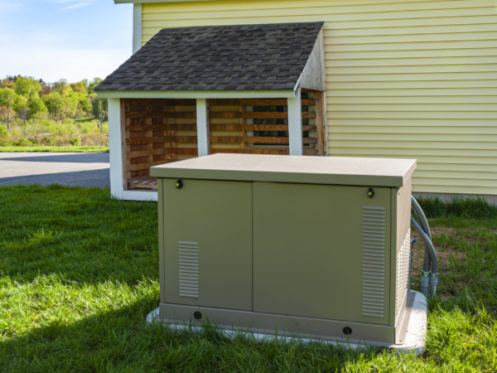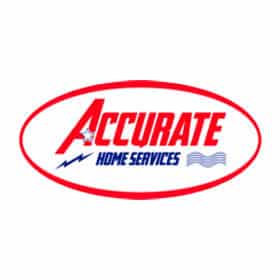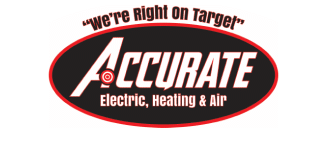Power outages are becoming increasingly common in Texas and other parts of the country. If your power goes out in the middle of the summer, your home can quickly become unbearably hot and reach temperatures well above 120 degrees in just a few hours. The only way to prevent this from happening is to ensure that you have a backup power source for whenever the electricity goes out.
Standby or whole-home generators can be a huge help during an outage as they allow you to keep running your air conditioner while also powering the rest of your home, keeping you cool and comfortable even when your local area is without power.
Understanding How Standby Generators Work
Standby and portable generators work in the same way, by burning fuel to create electricity. However, the issue with portable generators is that they only work with appliances and devices that you can plug directly into the generator. This means they don’t have any way to power your central AC system or other hardwired appliances in the event of an outage.
Standby generators don’t have this issue as they are wired directly into your home’s electrical system. The generator is installed outside and connected to either your home’s natural gas supply or a large propane tank. An automatic transfer switch (ATS) is installed inside and connects the generator to your main electrical panel.
The ATS works by measuring the electricity flowing into the panel. When the electricity cuts out, it instantly gives the signal for the generator to turn on. The ATS also immediately isolates your home from the local electrical grid and switches so that the generator provides electricity to the house. Whenever the power comes back on, the ATS deactivates, switching your home back over to the grid and signaling the generator to turn off.
Once the generator is up and running, it will first supply power to the air conditioning system since this uses more energy than anything else in your home. After turning on the AC, the generator will then begin powering any other high-energy appliances, like your refrigerator and washer/dryer. This is because most standby generators can prioritize different energy loads to ensure there is always enough power for the most important things.
Using Your AC to Find the Right Generator
When determining what size of generator you need, both the size and energy efficiency of your air conditioner are always the most important factors as it requires more electricity than other appliances. However, it isn’t as simple as just looking at how many kilowatt-hours of energy the unit uses; you also need to consider the start-up energy required.
Air conditioners typically use around three times as much electricity when first starting up as they do while they’re running. For example, a 3-ton AC unit usually needs around 3 kilowatts of electricity per hour (kWh) while a 5-ton unit may need well over 5 kWh. During the initial start-up process, these same units can potentially draw anywhere from 9 to 15 kWh. This does not include the additional energy needed to turn on the HVAC blower fan, which can range from 1 to 2 kWh.
As a result, your generator needs to produce a lot more power than you might think in order for your AC to start and continue running. If the generator is too small, the power drain from your AC will overwhelm it and cause the generator to automatically shut off.
Determining What Size Generator You Need
You’ll also need to consider the energy usage of all your other appliances. The standby generator will always power your AC system before anything else. However, just because it can turn on the AC the first time doesn’t mean there will be enough electricity to start your AC again later, once all your other appliances are powered. For this reason, we recommend that you choose a generator that produces a few kWh more than the maximum amount of electricity required to start your air conditioner.
The basic rule of thumb is that you need at least an 8-kWh generator to effectively power a home with a 1-ton AC unit, adding at least another 3 kWh for each additional ton that your AC weighs. This means a 2-ton AC unit needs an 11-kWh generator, a 3-ton unit needs a 14-kWh generator, and so on.
Even at these sizes, there is no guarantee that the generator will be able to power your entire home. For this reason, we recommend that you make a list of any essential appliances and devices you may need during a power outage as well as how much energy each one uses. This will help ensure that you choose a generator that is powerful enough not only to run your air conditioner but also to keep your lights on, your phone charged, your refrigerator cold, etc.
Ensuring Your Generator Is Ready When You Need It
It’s not enough just to install a standby generator and forget about it until the power goes out. Like any other piece of machinery, whole-house generators require regular maintenance to continue working properly. This means making sure to have a licensed electrician fully inspect the system every year and making sure to change the oil in the generator every two years or 2,000 hours of usage. Being diligent about keeping your generator well-maintained is a simple way to ensure that it will actually work when the power goes out.
Another essential part of generator maintenance is exercising the unit. All whole-house generators have an exercise mode that prompts them to start and run for 15 to 30 minutes. This works to prevent water from building up inside the unit and damaging its components. Running the generator also pumps oil throughout the motor to make sure everything is properly lubricated.
Most manufacturers recommend that you set your generator to exercise mode once a week. On the generator, you can program the specific day and time that you want the exercise mode to run. It’s best to choose a time when you are sure to be home so you can monitor the generator for any signs that it’s not working properly, which might include leaks, unusual noises or low oil pressure.
Your Local Standby Generator Experts
At Accurate Home Services, we install and service standby generators for residents of Kaufman and the surrounding areas. We also install lighting and ceiling fans and can help if you need your electrical panel upgraded or your home’s wiring repaired. We have a team of highly trained, certified HVAC technicians to help with your home’s cooling and heating systems. Our technicians repair, service and install central air conditioners, air handlers, heat pumps, furnaces and ductless HVAC units. We also specialize in duct cleaning and other indoor air quality services.
If you’re looking for added convenience and energy savings, we can outfit your system with a Wi-Fi smart thermostat. For more information on standby generators or any of the other services we offer, please contact us today.




